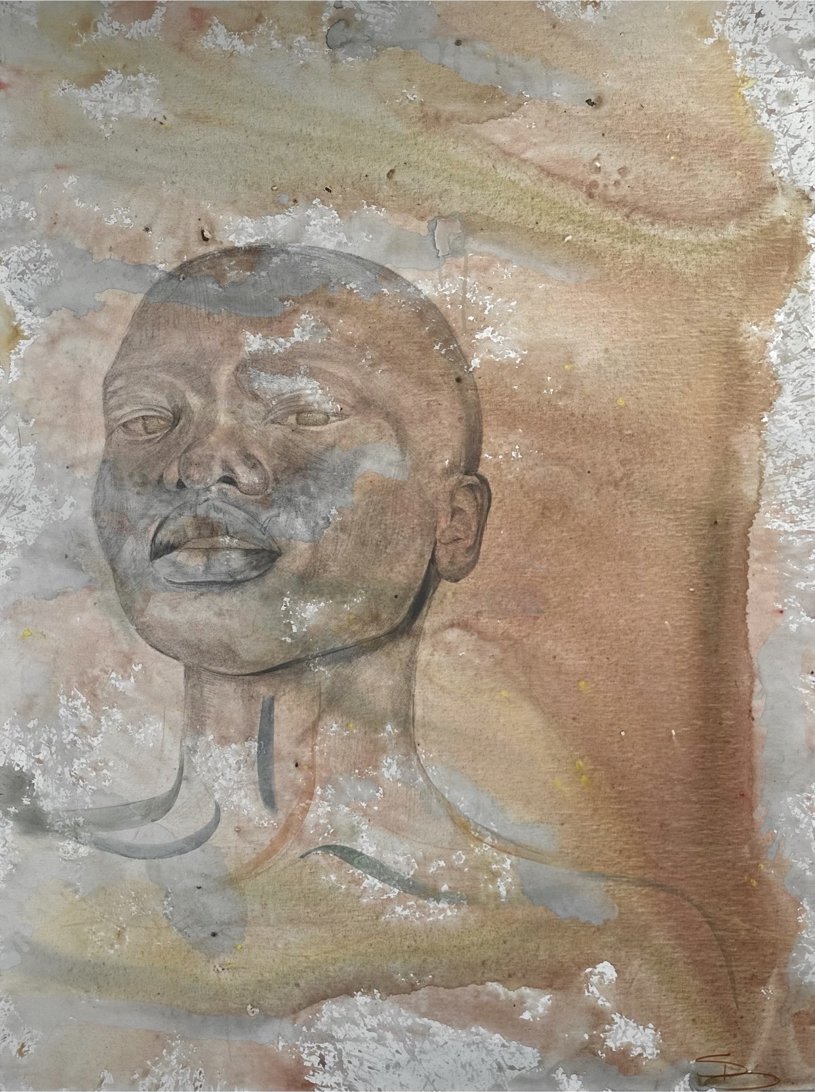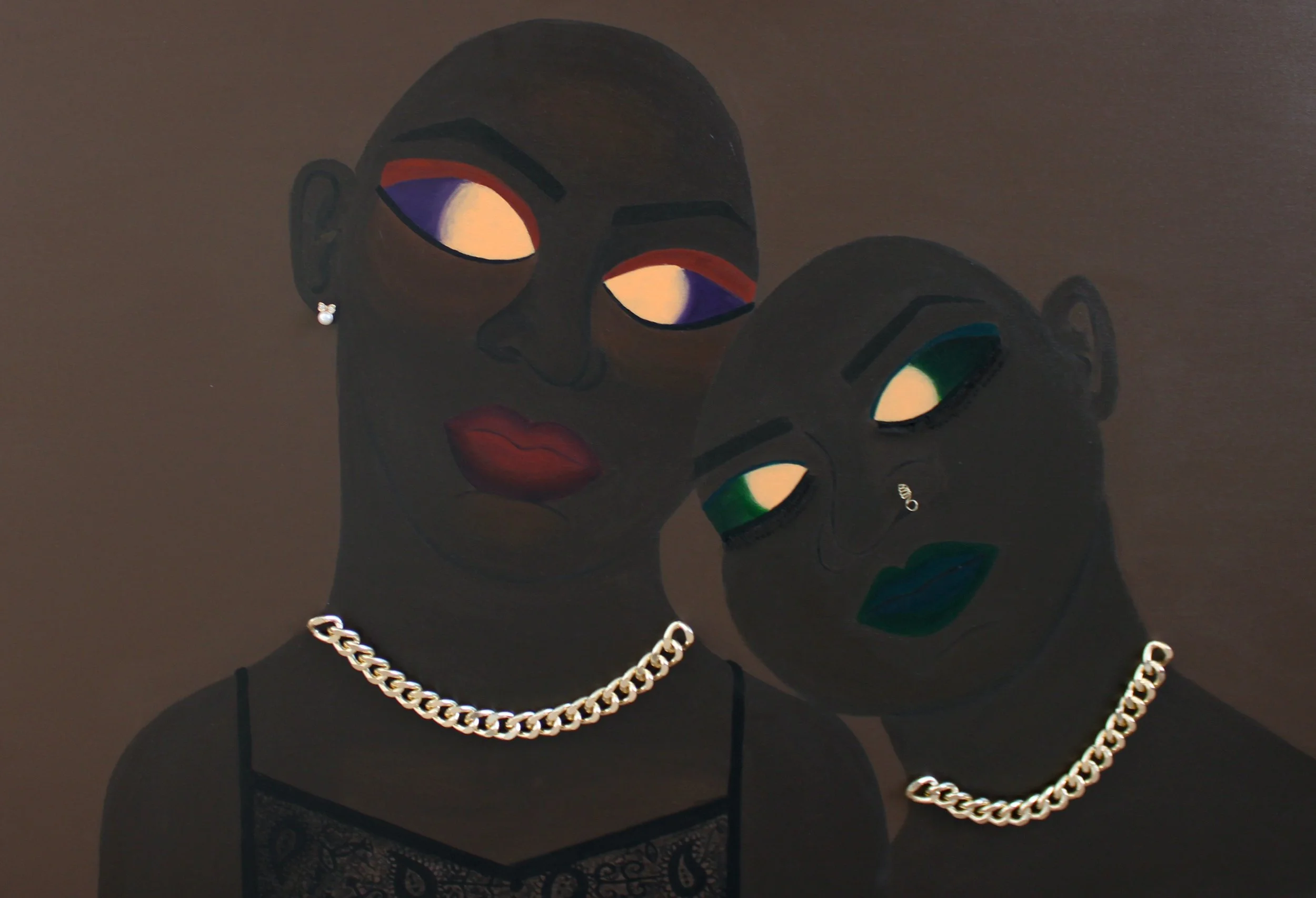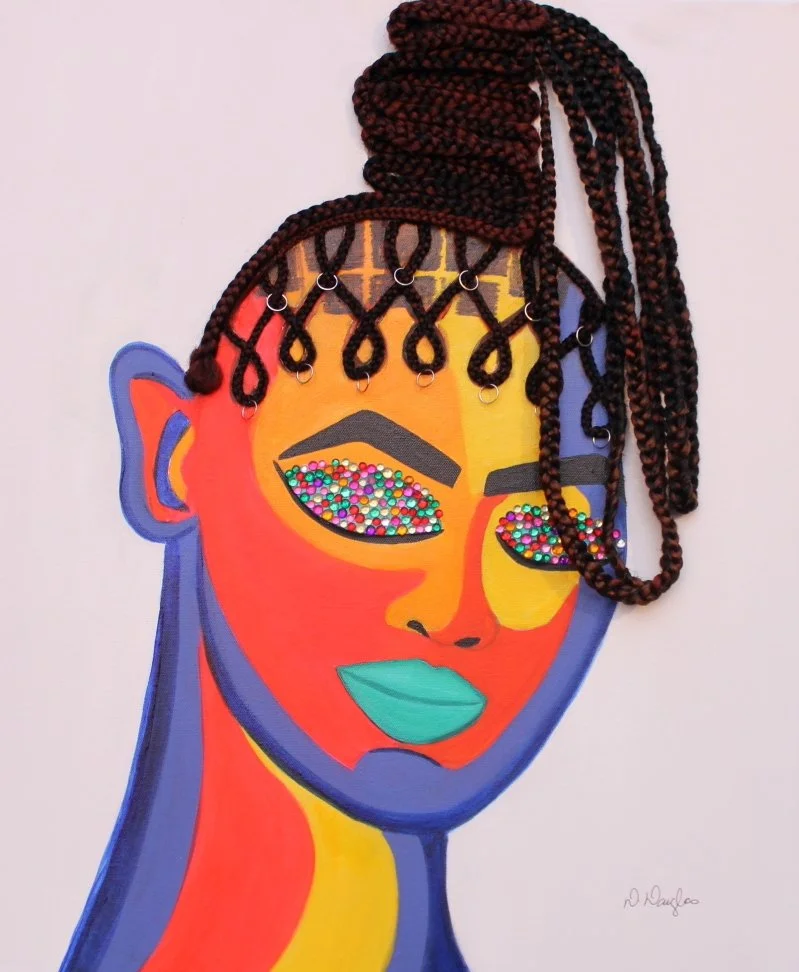
Alexzandria Robin, Run Faster, 2024

Syd Bell, Neck, 2022

Demeree Douglas, #BlackConfidence, 2023

Clymenza Hawkins, Listen, 2024

Ebony B. Mckelvey, Untitled, 2019 (From the Black Girl series)

Alexzandria Robin, Run Faster, 2024

Syd Bell, Eye, 2022

Demeree Douglas, #Solidarity, 2022

Clymenza Hawkins, The Clothesline, 2024

Ebony B. Mckelvey, Untitled, 2019 (From the Black Girl series)

Clymenza Hawkins, The Siren Flow, 2024

Demeree Douglas, #CategoryHair, 2022

Demeree Douglas, #Retro, 2024

Ebony B. Mckelvey, Untitled, 2018 (From the Beautiful Ghetto series)

Alexzandria Robin, Run Faster, 2024

Ebony B. Mckelvey, Untitled, 2017 (From the Hey Ugly series)
On View July 10, 2025 - October 3, 2025
Beholder showcases artworks that reveal the subjective, interwoven nature of art, beauty, and Black womanhood, expanding the narrow stereotypes that bind the three. Featuring artworks by Sydney Bell, Demeree Douglas, Clymenza Hawkins, Ebony B. Mckelvey, and Alexzandria Robin, Beholder is a necessary platform for self-love and self-determination, where Black women artists depict and celebrate the unrivaled beauty of other Black women, on their own terms. In so doing, they also challenge the many toxic beauty standards designed to exclude them from discussions on what art is and who is entitled to artistic representation.
Working across collage, drawing, painting, photography, photomontage, and sculpture, these five artists dare to envision a myriad of Black women archetypes, not only as protagonists of their own stories but also as leaders of the Black is Beautiful movement. In its titling, the exhibition insists upon active viewership, where visitors are asked to lend their unique perspectives to beholding the artworks on view. Here, beauty lies not only “in the eye of the beholder”—it too resides within each artist’s distinct depiction of and reverence for the art that is Black womanhood.
While natural or so-called objective beauty is often lauded as the holy grail, art, beauty, and womanhood itself are each righteously subjective, informed in part by the many cultural codes that influence societal beauty standards. In shaping our own senses of self and identity, we self-fashion, making aesthetic decisions that reconcile how we look in relation to who we want to be. This healing, individualistic process often bumps up against immense external pressures to assimilate, such as binary dress codes and respectability politics that dictate how we show up in the world. In Beholder, beauty is regarded not as an extrinsic force that acts upon, but rather as an intrinsic spirit or energy that radiates from within.
In their photographs and paintings respectively, Ebony B. Mckelvey, a New Haven native, and Demeree Douglas, a Jamaican-American, consider how hair and its artistic styling factor into these discussions on Blackness and beauty. In both her candid and stylized photographs, Mckelvey narrates the stories of Black women, creating striking portraits that “empower women of color, celebrate their authenticity, and redefine traditional beauty standards.” On view are images from her Beautiful Ghetto, Hey Ugly, and Black Girl series; it is clear from their titles that these images commit to finding and elevating beauty in what others have deemed ghetto, ugly, or undesirable. Inspired by the powerful women in her life, Mckelvey’s portraits depict the Black woman’s strength, beauty, and resilience, all while critiquing the society that denies her peace and the ability to be soft. Mckelvey expertly captures the internal and external beauty of her sitters, exploring their hair care as an act of love, for both self and others. She too uplifts a myriad of Black women archetypes, from the confident adorner, to the devoted nurturer, to the soft Black woman lavishing, head skyward, in her own grace.
Mixed media artist Demeree Douglas sees her own natural hair journey as a source of inspiration in creating these vibrant paintings that celebrate the Natural Hair Movement, which began in the 1960s alongside the Black is Beautiful Movement, and resurged in the 2000s as awareness circulated around the health dangers of hair-straightening chemicals. By depicting Black women that embrace their natural hair texture or choose to rock a bald head–either by choice or as a casualty of the scalp disorders and cancers that relaxers can cause–her paintings work against the “pressure to straighten one’s hair and hide one’s heritage to satisfy society’s standards.” She adorns her portraits with glitter, flowers, beads, earrings, gold chains, and braided hair to, “represent the numerous interpretations behind not only Black hair and Black art, but the Black woman herself.”
Sydney Bell–a visual artist, fashion designer, and tattooist from New Haven–presents two portraits on canvas that depict Black women with bald heads, soft eyes, broad noses, and full lips; each confidently engages the viewer in direct eye contact. In Neck, Bell juxtaposes the precise pencil lines used to render the face with the fluid, organic paint strokes used to gesture towards a bodily form. This aesthetic decision invites viewers to imagine a boundless beauty that flows far beyond what is visible on the canvas alone. The portrait is washed with plumes of copper, gold, and silver paint, giving the woman an ethereal, godlike quality. In Eye, the portrait is markedly more monochromatic, aside from a minimal splattering of blue paint, and ring of muted pinks, oranges, yellows, and blues that encircles the left eye. Through this gesture, Bell–who reveres the subjectivity of art–offers an image that quite literally depicts beauty’s residence within both the eye of the beholder and that of the beheld. She reminds us of the power of perspective, declaring “there is no Higher Eye; the Highest Eye is your own.”
Whereas Mckelvey, Douglas, and Bell primarily engage portraiture to explore the intersections of race, gender, and beauty, Alexandria Robin and Clymenza Hawkins zoom out from neck-up framings to depict the Black woman in her entirety, situating her within conceptual environments and cosmic scenes of spiritual transformation. Working through mixed-media sculpture and photomontage respectively, Robin and Hawkins envision alternate universes where Black women live and thrive, unbound by worldly oppressions.
In her Nebulon series, Robin deploys “technology, tradition, and imagination” to represent an “otherworldly being that carries profoundly human stories—stories of identity, transformation, and self-discovery.” These surreal forms are brought to life through an artistic process that, in and of itself, embraces metamorphosis; her figures begin as a digital concept that is later sculpted and refined in a 3D modeling program, cast in resin, and sanded to smooth perfection. Her precision-crafted, ball-jointed dolls possess an array of rich, dark skin tones, and intricate facial features that Robin shapes into pensive expressions. She poses her figures–many of which are adorned with lifelike, textured hair and culturally-coded clothes–in ways that infuse them with agency, inviting us to imagine them as soulful entities rather than inanimate playthings. In discussing the symbolism behind her work, Robin states, “Each doll stands as a testament to resilience and transformation. The ball-jointed mechanism itself symbolizes adaptability: the ability to bend, pivot, and re-form in response to life’s shifting circumstances.” Loose Woman expertly embodies this capacity for resistance through adaptation, depicting a woman who holds her own head in her lap, defying the societal expectations of Black women to bend to the will, needs, and wants of others.
Clymenza Hawkins, a native of New Britain, Connecticut, is a self-taught artist who uses photography and photomontage to create intricate, mixed-media collages that depict what she terms, “WomenFolk, visionaries of their own destinies.” Her source materials include photographs of the Black women that she encounters in her daily life and archival clippings from books, magazines, and other ephemera. These images are then cut or ripped into different shapes, rearranged through collage techniques, and affixed on the canvas in complexly overlapping layers to create visionary, folkloric environments. Hawkins’ iconic artworks often feature constellations of Black women in physical dialogue with one another, capturing the nuances and complexities of Black sisterhood while also radiating each woman’s individual wisdom, grace, and pride. The recurring motifs of butterfly wings and fairy-like accents in her works underscore Hawkins’ interest in art’s ability to visualize “the metamorphosis within the realm of a woman’s soul,” and her “spiritual path into the unknown.” This exploration of soul, spirit, and unknowability reaches across this entire exhibition, encouraging viewers to confront the objective lenses they unknowingly bring to engaging art, in all its beautiful subjectivity.
- nico w. okoro, Founding CEO, The Building Fund | Founding Partner + Curator-at-Large, Orchid Gallery


